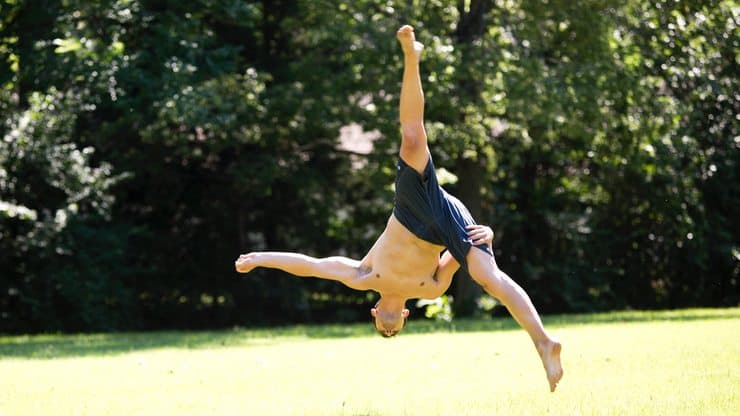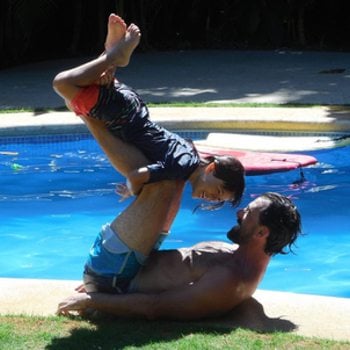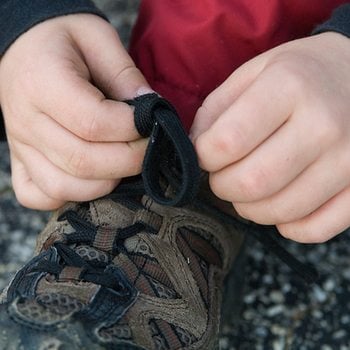Tell me if this sounds familiar…
- You see somebody doing something really cool and decide you’ll try it too.
- You fire up go online and find a tutorial to see how it’s done.
- Then, armed with the correct methods and information, you leap head-first into your training, ready to fly!
- And then you run into your old friend, Reality.

We’ve all been there, so ask yourself:
- What’s stopping you from consistent progress?
- What’s really hindering your development from the things that you can do right now to what you what you want to be able to do?
- What’s the weakest link in your practice?
It’s the fundamental movement patterns that are often neglected and are key to continued progress in your athletic abilities.
And we’re about to show you how to build them up.
You Can’t Just “Skip Over” the Middle
It turns out that almost everyone has missed out on “intermediate” physical skills practice. After mastering standing and walking, most of us just never really bothered to work very hard at more advanced types of movement.
The exception, of course, is those who were involved in sports or dance and had to learn these skills. But even then, the curricula are usually specific to the particular activity.

Like it or not, you’re going to suck before you get better…
What’s missing for most people is a comprehensive and generalized form of “adult physical education” that fills gaps and covers bases for a wide variety of applications and goals.
Why It’s So Difficult to Learn Skills as an Adult
Back in the old days (circa 15 years or so ago), we didn’t know what we were missing. Our perceptions of “strength” and physical prowess were shaped almost entirely by bodybuilding and professional sports.
Sure, every four years, the Olympics would roll around, but it was too easy to dismiss the skills on display as irrelevant and freakish.
After all, how often do most people throw a javelin in this day and age?
So we were left with only a couple of metrics for fitness:
- How much can you lift?
- How fast can you run?
Which is a pretty limiting way to look at life.
But now, we live in an age of wonder. Information is plentiful – information not only about what’s possible, but about how others have achieved it.

The Interwebz have made it possible to discover just what’s possible with the body (without waiting around for the Olympics). And with that information much more readily available, the number of people putting it to use is greater than ever before.
Now that people have heard of handstand push-ups, one-arm chin-ups, single-leg squats, planches, and any number of other skills, they are trying them out – with varying degrees of success.
What exactly is preventing you from getting those skills?
Well, the obvious answer is that you haven’t trained for it.
You don’t have the strength. You haven’t practiced. You need more flexibility. You’re lacking any number of specific physical attributes you might need to develop.
But let’s look at this a little closer.
The real reason you can’t do what you’d like to do is that you don’t have control over your body.
Developing Body Control: How People Build Physical Skills
Body control is our code word for all the things you might need in order to do what you’d like with your body. It’s not just the attributes (strength, flexibility, etc.) but it also entails applying them skillfully.
Learning to Crawl

Playing and exploring are universal concepts for kids.
The learning of body awareness, coordination, and agility should start when we are young.
Children naturally play with their body movements from the day they were born. This is how we learn about the world and our place in it. The sensory information you receive as a child is incredible, everything is new!
Look at children learning to sit up, crawl, walk and run.
And as an adult, it turns out that crawling is still one of the most essential categories of movement to practice.
👉 See our full guide to locomotor movement training
Playing with Yourself
 Though we initially learn them without much instruction, proper running, jumping, rolling are not genetically ingrained behaviors.
Though we initially learn them without much instruction, proper running, jumping, rolling are not genetically ingrained behaviors.
Many romanticize children’s physical development by saying “we just need to get out of their way and let them express their natural abilities.” That’s like saying we don’t need to teach children the alphabet because they will “naturally” divine what the symbols mean.
In other words, it’s BS.
Yes, children will explore and play with their movements, and with their seemingly infinite amount of energy they’ll discover ways to do certain skills. But not necessarily in the most efficient – or safest! – way.
Children have a lot to learn and master. They have pressures and time constraints on achieving certain developmental stages and milestones in step with what society deems “normal” and important.
There’s nothing wrong with that, but it means that:
- Once a child learns to run reasonably well, there’s not much incentive to really work on running better.
- Once you can hop over a stone or jump a rope, there’s little practical reason to spend the time developing the proper mechanics of a truly effective jump.
Those things are only practiced if they are rewarded.
Rewards can be joining a Little League team and winning trophies or simply not being picked last for dodgeball. But make no mistake: when the rewards cease to be enticing, you quit playing.
And you need to start it up again.
Developing The Skill of Control
There are fundamental principles of good movement in every skill.
Now we don’t mean that there are so-called “universal” ideas that are applicable to every movement. Rather, each skill has essential qualities that need to be there for consistent efficient performance.
Body control is a learned skill.
Aside from the occasional athletic genius child who seems to pick up any skill without difficulty, people have to learn how to move their bodies.
Usually, it’s a matter of trial and error over years of repetition and failure.

Think some people are just “naturals” at this?
It’s developed the same way you develop skill in writing the alphabet, tying your shoes, playing guitar, shuffling a deck of cards, shaving, cooking the perfect hamburger, etc. All those “life skills” that are important at various stages of our social development are built on repetition and practice.
There’s also a way to cut down this time and learn how to control and master your body.
You’ll need to work on the fundamentals of body control, ideally in a systematic and progressive manner (in other words, NOT the way you learned to move as a child).
These fundamentals lay the foundation for grown-up physical competence.
The Problem with Traditional Practice: Why it Only Works for Natural Athletes
Here’s how most people try to learn physical skills:
- Do something a whole bunch until you can do step 2.
- Do the next thing a whole bunch until you can do step 3.
- Do the skill.
One of the sexy skills that people often ask us about is the handstand. It’s not intimidating, it looks fun, and most people can actually learn them with enough of the right practice.
But they’re deceptively frustrating.
You’ve probably tried to do one, and you’ve probably not been able to hold it. Turns out, there’s a lot of subtlety and complexity hidden below the surface, which is why our MASSIVE and detailed handstand tutorial is one of the most popular things we’ve ever produced.
Why Everyone Hates P.E.

This is what gym class was like for the rest of us.
Depending on where you grew up (and when), Physical Education can conjure up not-so-pleasant memories of gym teachers forcing kids to run and jump and stretch, and sorting kids into categories based on how they look and performed on standardized tests.
And by the second week of class, pretty much everyone was sorted out according to their “natural” athletic ability, with no real hope of improving.
Weaklings are forever relegated to play positions that require the least of them, and it’s the “athletes” that get to play the fun positions and enjoy the games.
What Happens Without Real Teaching
Unfortunately, there was no actual teaching in P.E.
“Just go do this” is not teaching. So the default groups in P.E. class were those lucky kids that just “got it,” and the rest that didn’t.
That’s no way to do things!
It’s certainly not “education” if nobody is learning anything. No matter how loudly your “coach” would yell at you to “watch the ball!” or “jump higher!” those aren’t useful instructions if you don’t know how to act on them.
When the advice isn’t actionable, you have to back it up. Sometimes all the way to scratch.
Return to the fundamentals and practice the steps that got glossed over or neglected. Only by practicing those, can you really move forward.
Play, and How it Can Transform Your Physical Abilities
Ideally, that practice is “mindful” – meaning that we engage with it fully and give attention and positive expectation to each performance. A lot of recent research shows that mindful practice produces much better results than simply repeating a task you don’t care about.
Which is another reason treadmills suck.
But it’s also our best argument for the importance of play and exploration in training. If it’s fun, you’re going to come back to it and work at it, regardless of how much time or effort it takes.
It’s probably pretty clear by now that we’re going to suggest you work on building fundamental movement skills and practicing them in a playful manner.
What remains is identifying which skills to work on, and choosing a practice method.
Essential Skills for a Strong, Healthy Body
As adults, most of us have forgotten how to move and build skills – and I’m not talking even talking about ninja-level skills. I’m talking about basic skills that represent the most important fundamentals to get through life feeling good, without pain and restriction.
Some essential movement pattens include:
- Unilateral movements – single-arm and single-leg
- Extension and flexion in the hips and back
- Rotational across the core and trunk
- Full-body coordinated movements
These patterns are necessary for body control, agility, coordination, and general athleticism. They don’t cover every possibility, but they’re a great general framework, and you can see some examples in this video:
Find and Strengthen Your Weakest Links – the Fun and Easy Way
Depending on where you’re at in your movement journey, it may sound downright impossible to start moving like a kid again. But, it’s amazing what just a little bit of consistent movement exploration and practice can do for your mind and body.
You simply can’t keep banging your head against the wall doing the same things you’ve always done if you aren’t getting where you want to go with them.
Find a way to assess what you are lacking and work on those weaknesses to build them up.
Build Your Foundation for Movement Skill
Develop basic strength, flexibility, and motor control with essential movements patterns and variations, refined over consistent practice.






